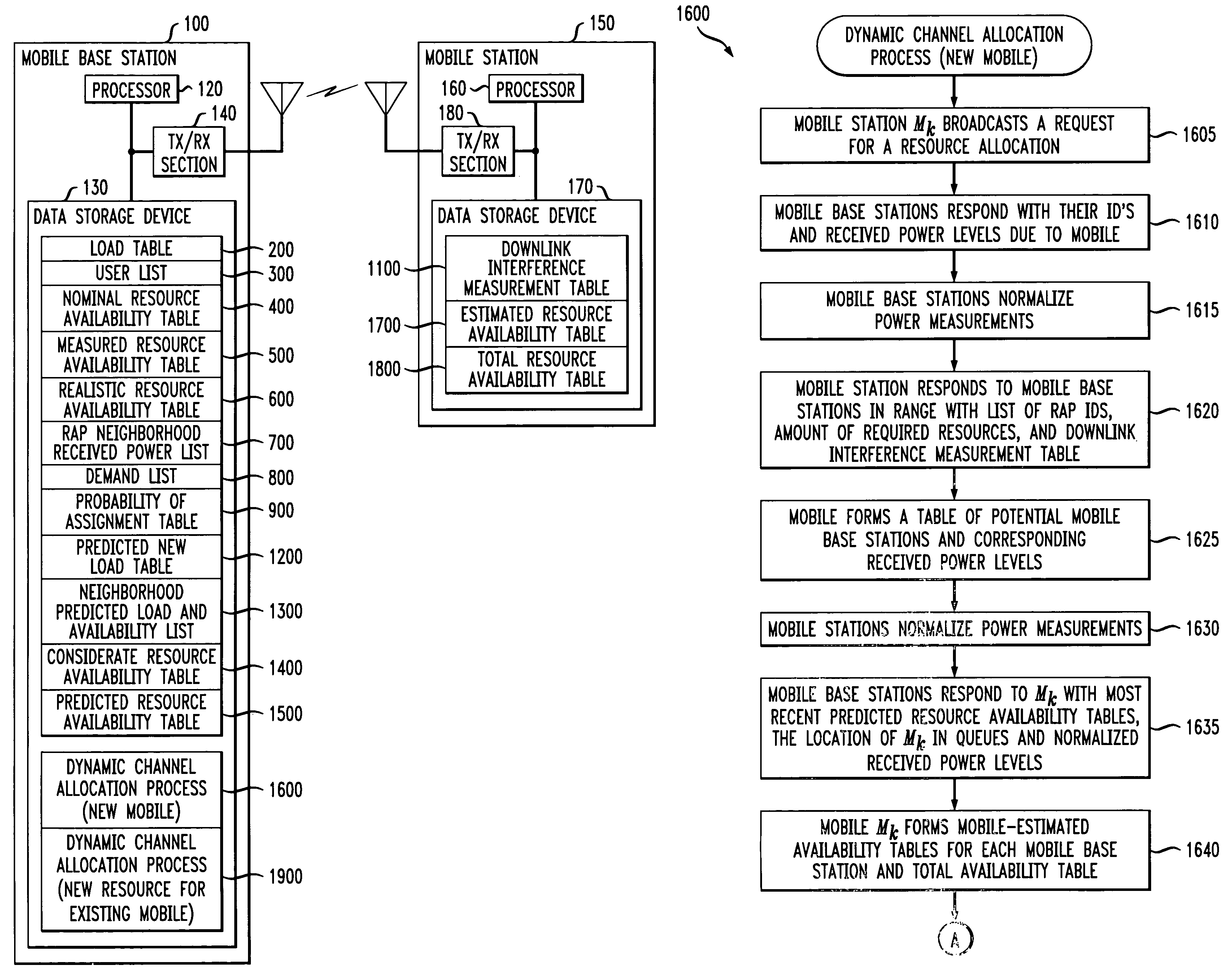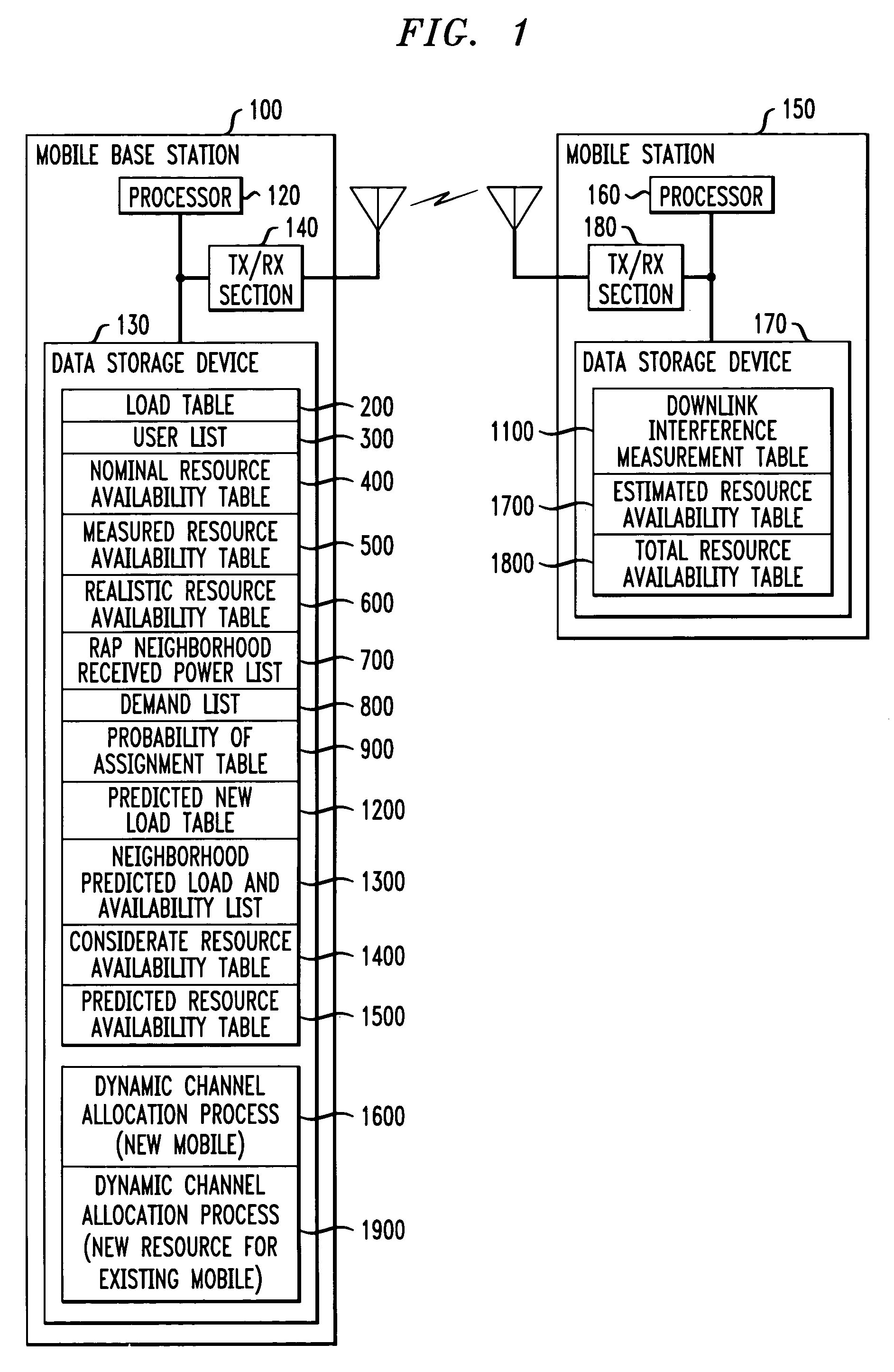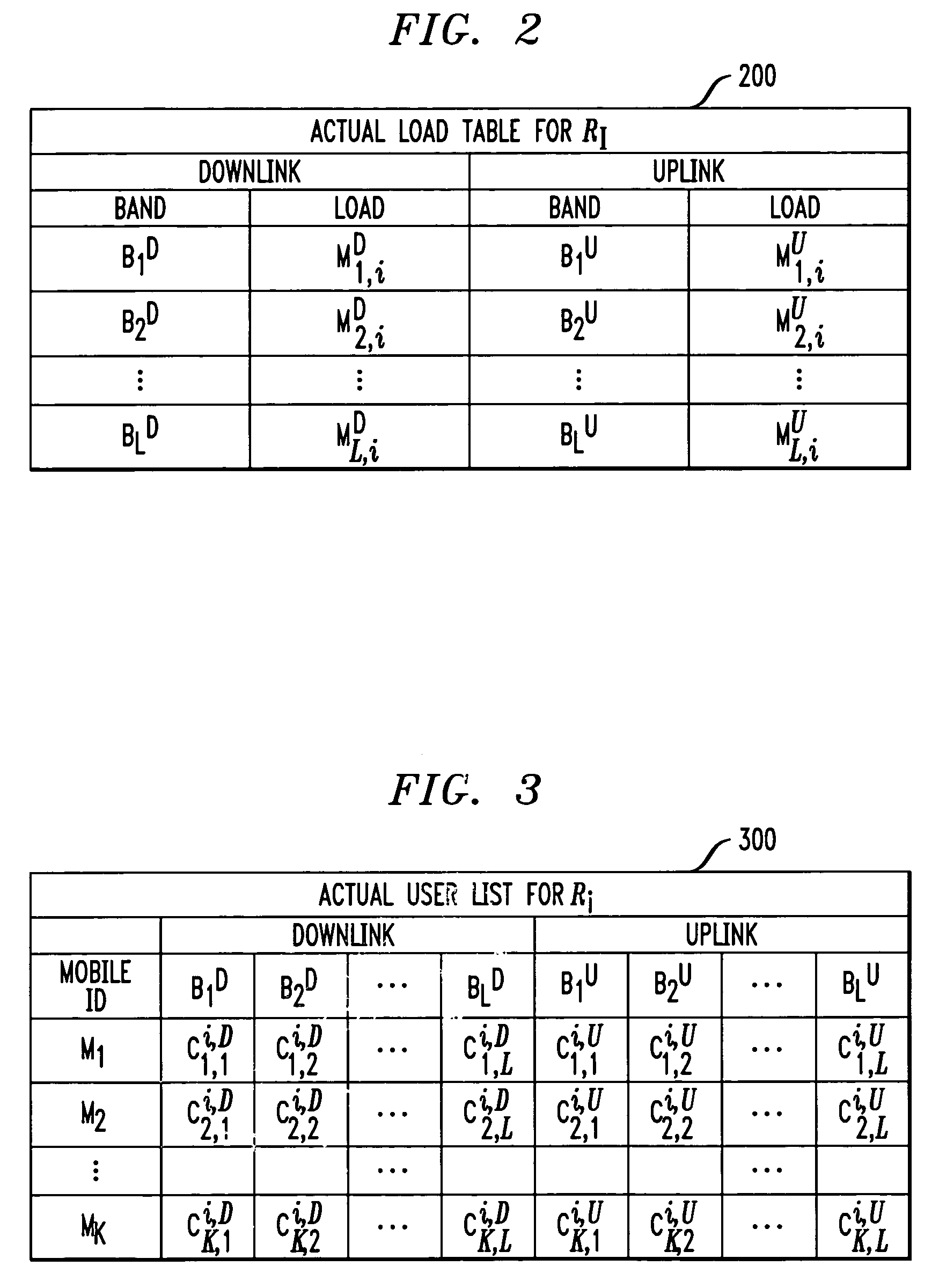Distributed dynamic channel allocation technique for multi-carrier CDMA cellular systems with mobile base stations
- Summary
- Abstract
- Description
- Claims
- Application Information
AI Technical Summary
Benefits of technology
Problems solved by technology
Method used
Image
Examples
Embodiment Construction
[0028]FIG. 1 illustrates a multi-carrier CDMA cellular system that includes a mobile base station 100 and a mobile station 150, in accordance with the present invention. According to one feature of the present invention, the distributed dynamic channel allocation algorithm is based on channel power measurements carried out by both the mobile station requesting an allocation of a resource and the mobile base station 100 attempting to allocate an available resource to the mobile station. Since the mobile stations play a role in obtaining a resource allocation, based on information they receive from the mobile base stations 100, the resource allocation is improved. A resource is defined as one PN code over one frequency band and is equal to one CDMA channel. Channel power measurements from both the mobile base station 100 and the requesting mobile station are used since the mobile base station 100 are not fixed base stations as is the case in commercial CDMA systems.
[0029]Generally, th...
PUM
 Login to View More
Login to View More Abstract
Description
Claims
Application Information
 Login to View More
Login to View More - R&D
- Intellectual Property
- Life Sciences
- Materials
- Tech Scout
- Unparalleled Data Quality
- Higher Quality Content
- 60% Fewer Hallucinations
Browse by: Latest US Patents, China's latest patents, Technical Efficacy Thesaurus, Application Domain, Technology Topic, Popular Technical Reports.
© 2025 PatSnap. All rights reserved.Legal|Privacy policy|Modern Slavery Act Transparency Statement|Sitemap|About US| Contact US: help@patsnap.com



